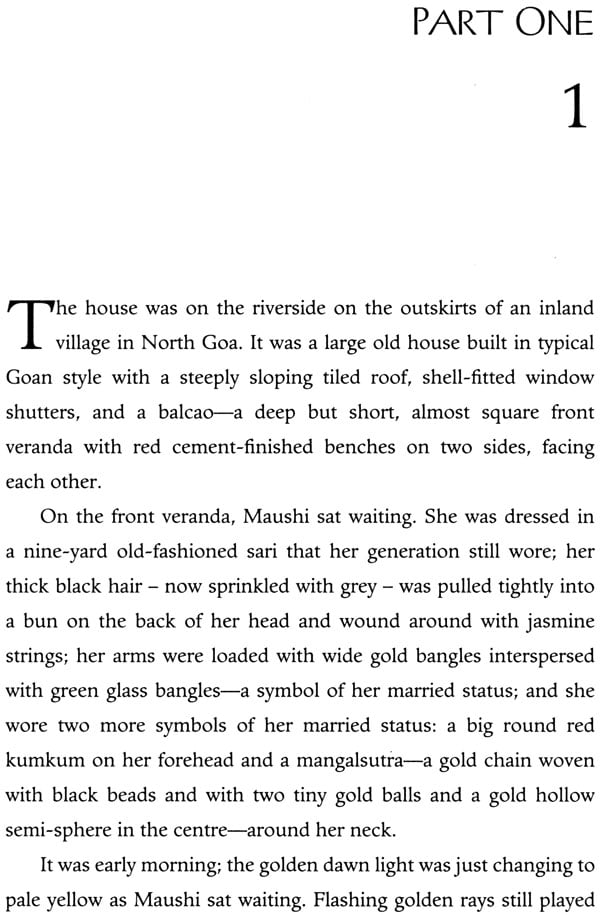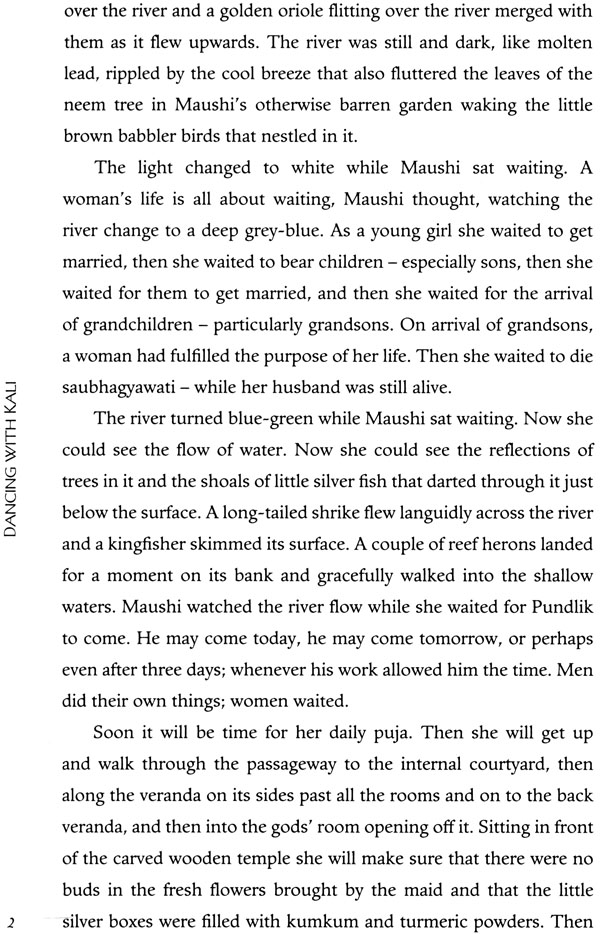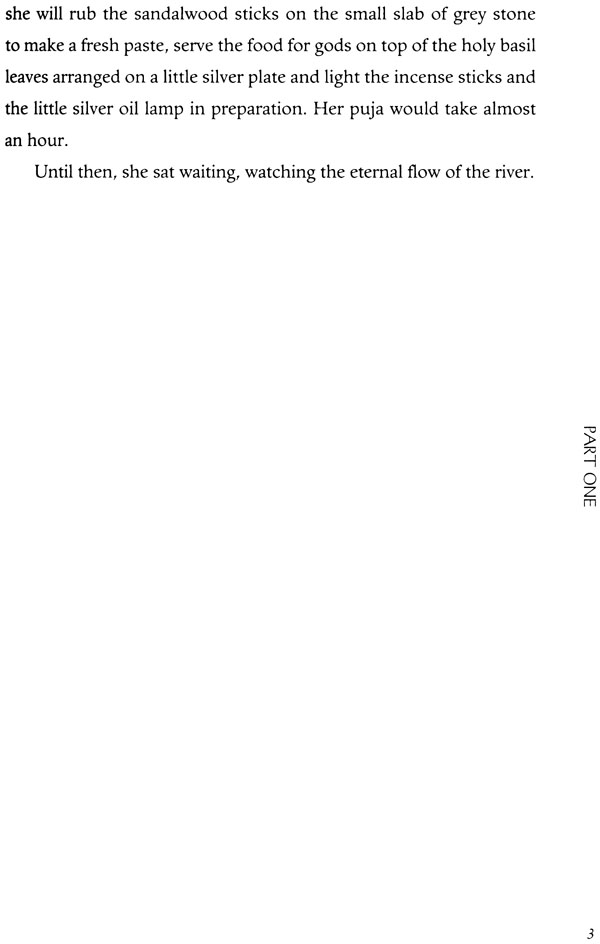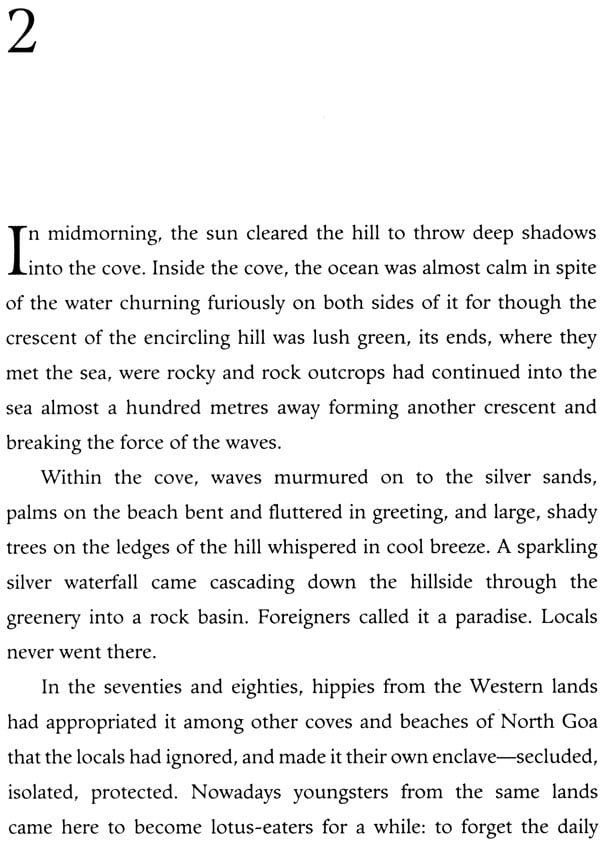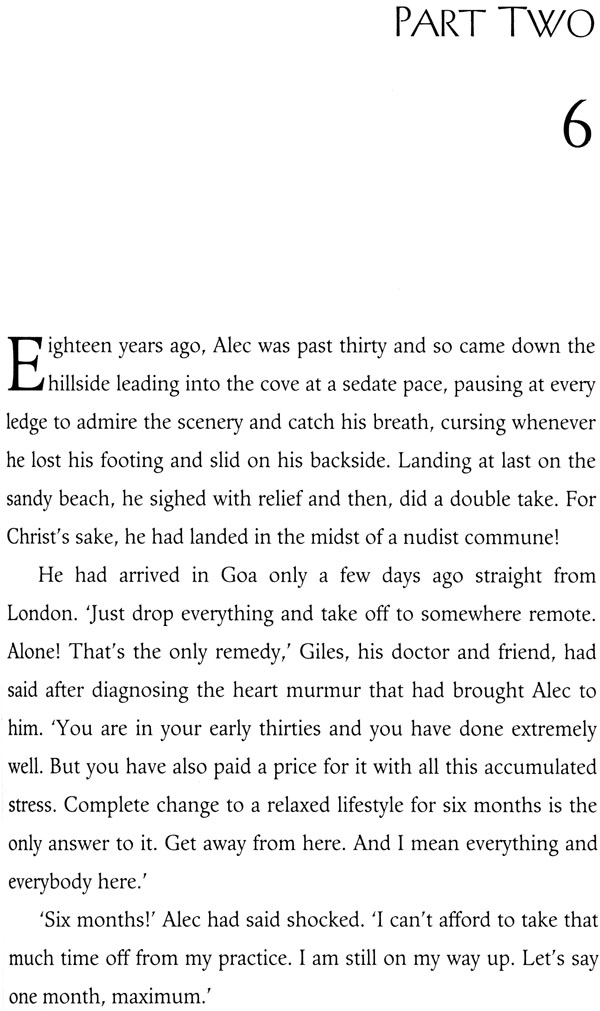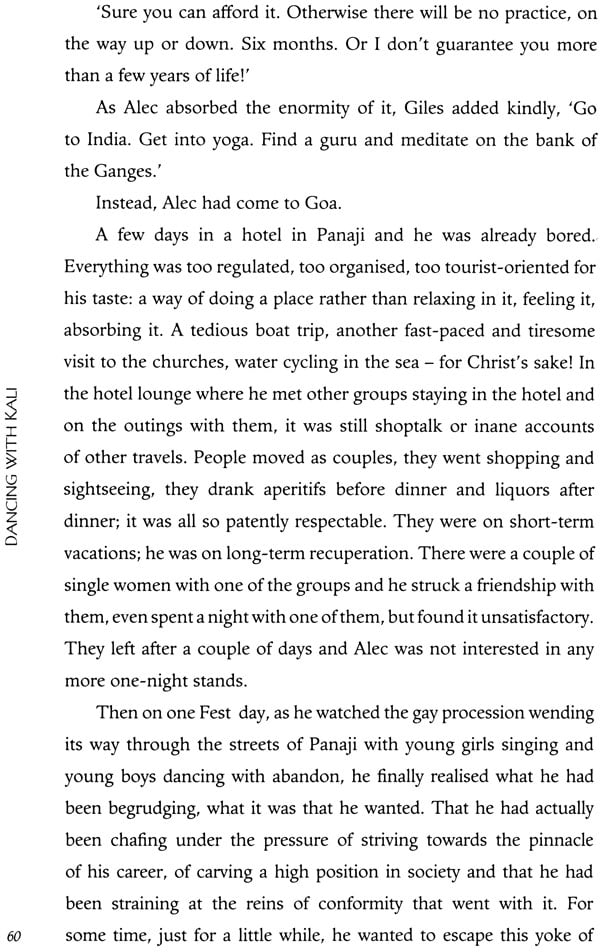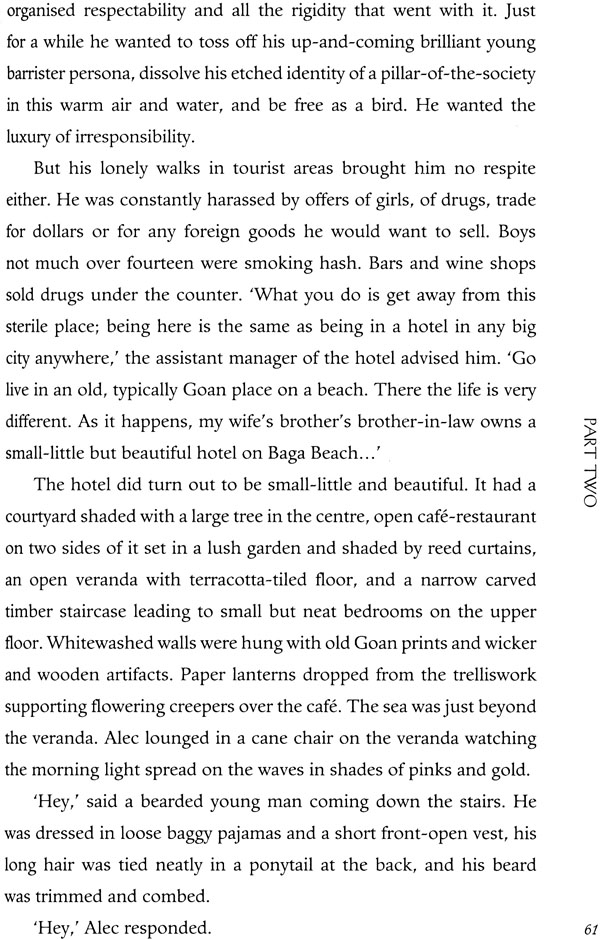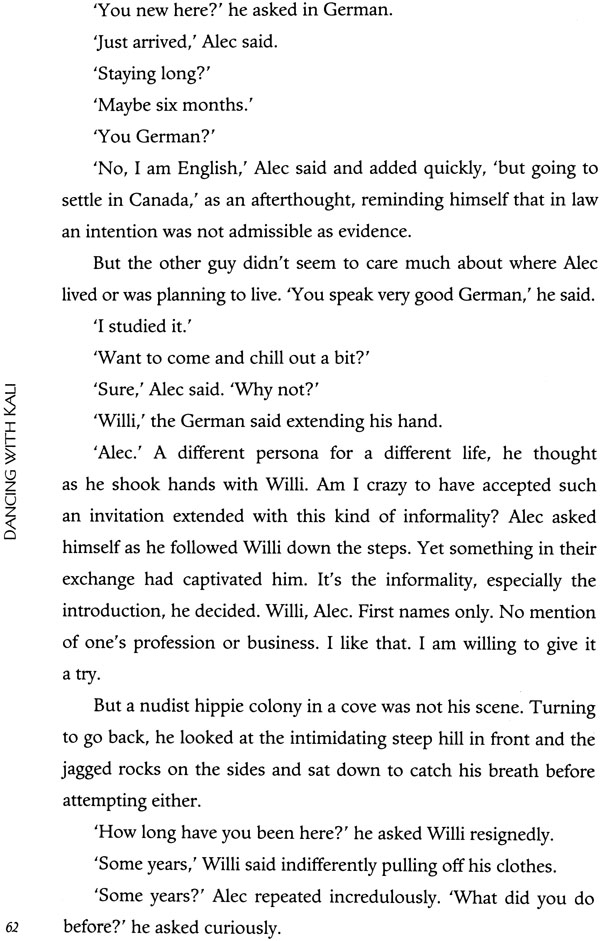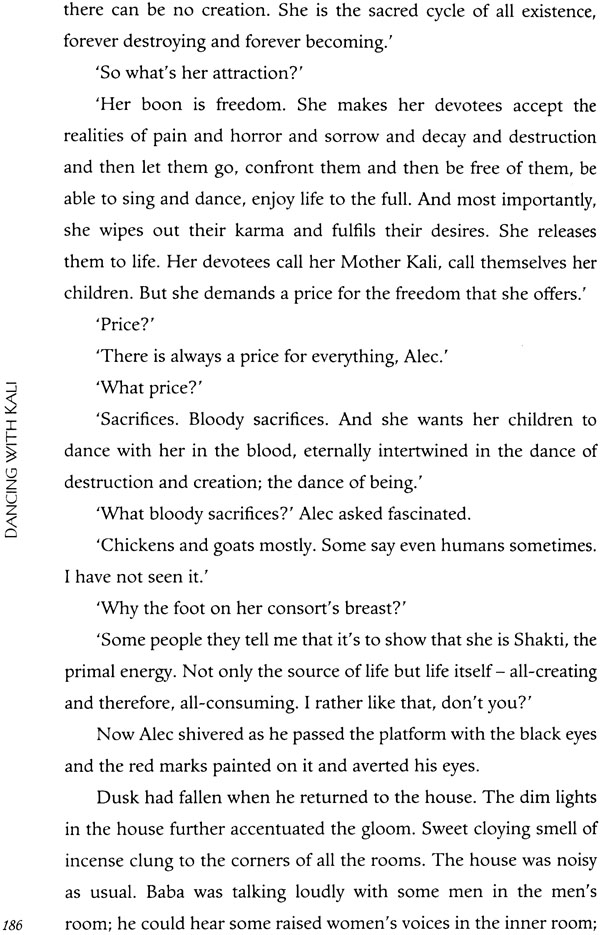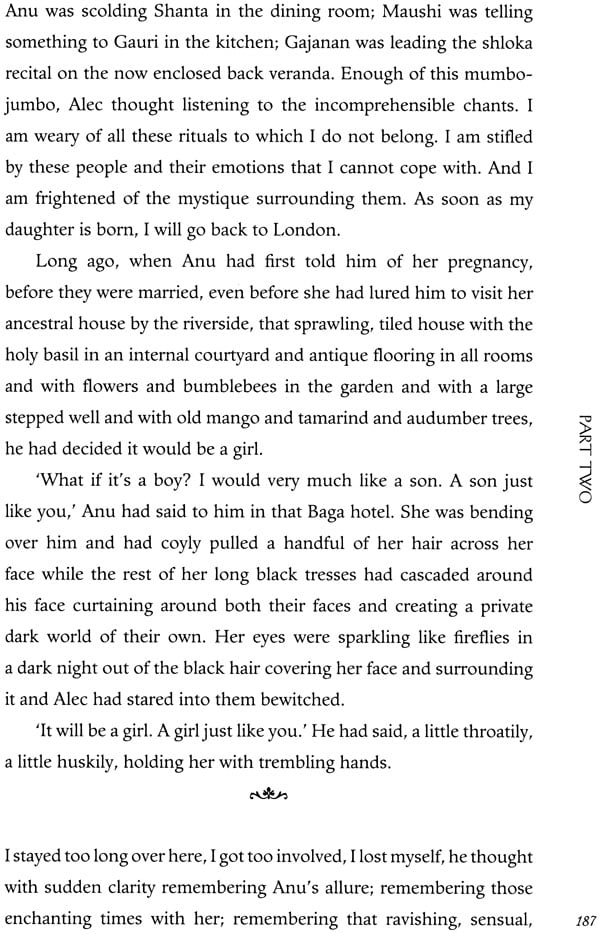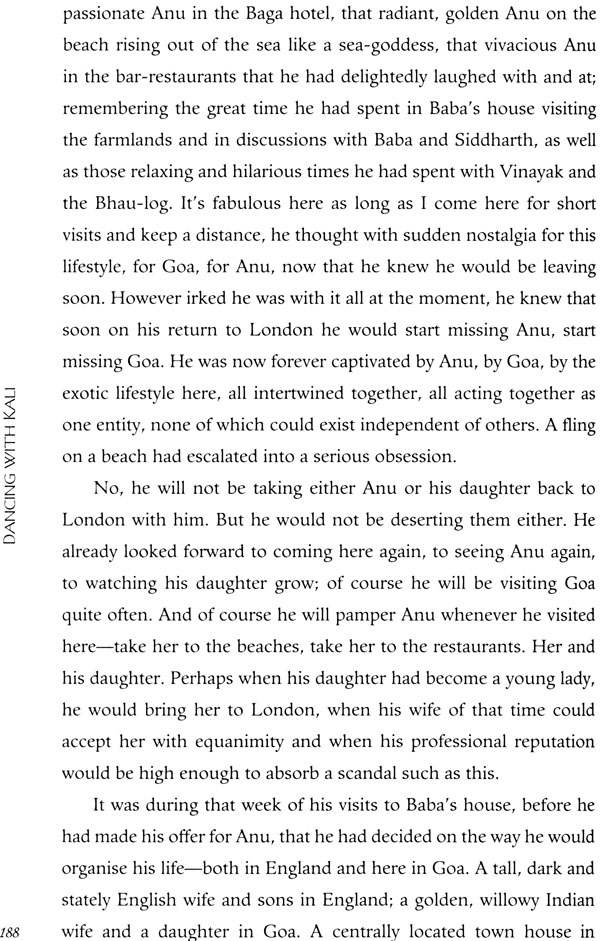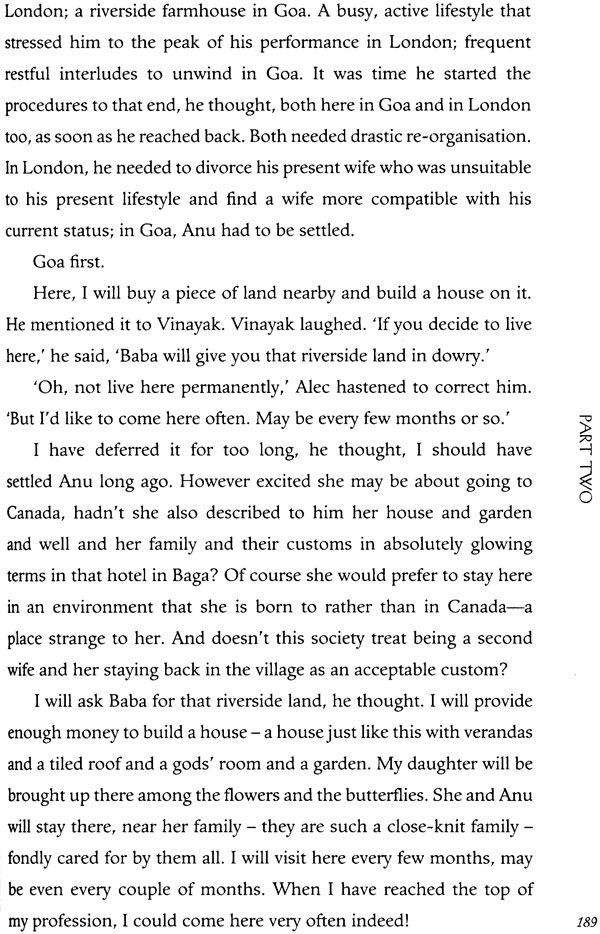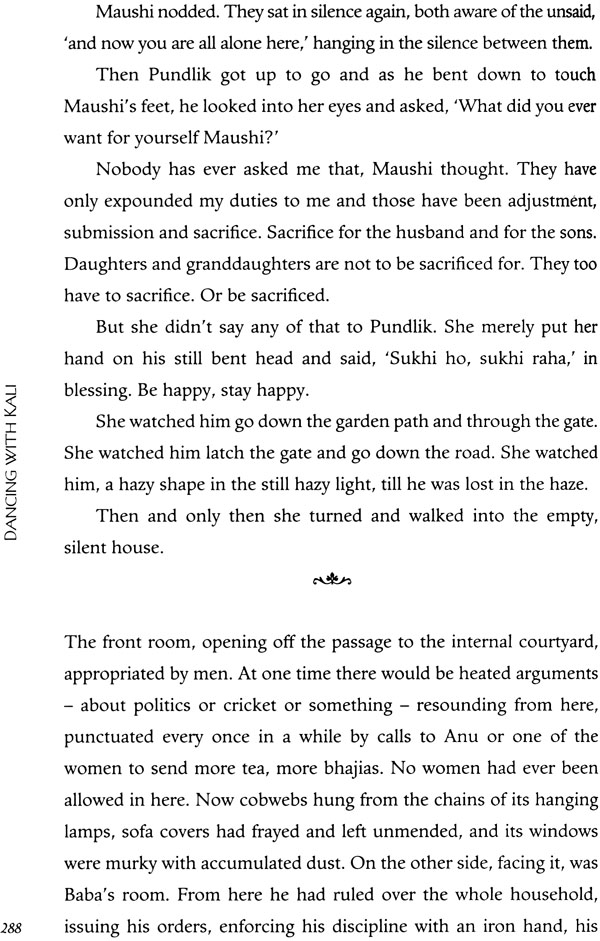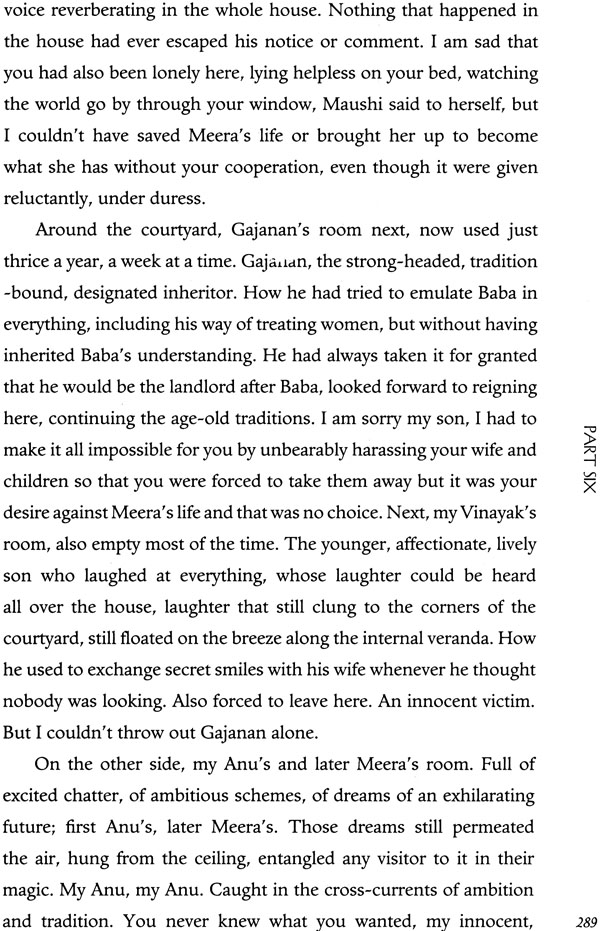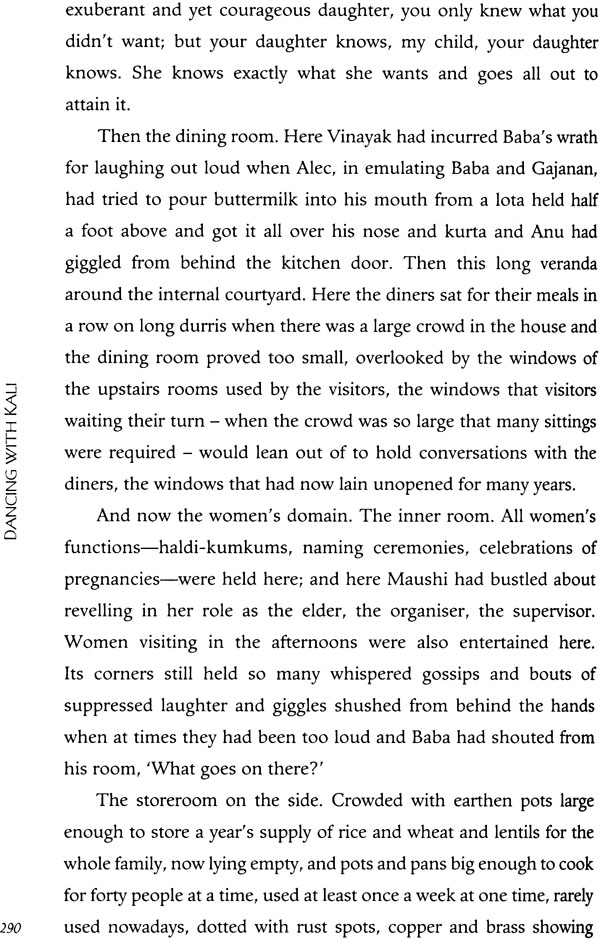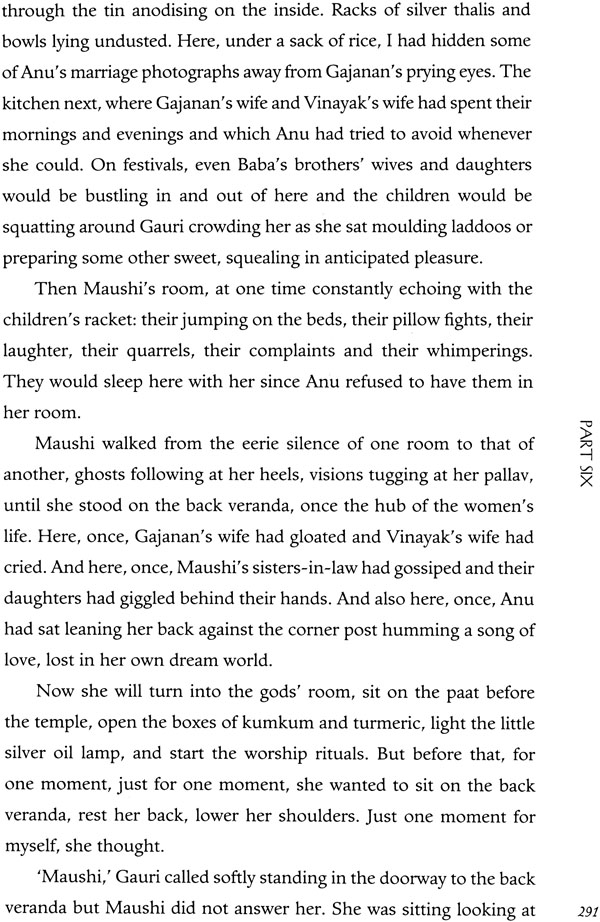
Dancing with Kali
Book Specification
| Item Code: | NAC721 |
| Author: | Lalita Das |
| Publisher: | Niyogi Books |
| Edition: | 2010 |
| ISBN: | 9788189738600 |
| Pages: | 292 |
| Cover: | Paperback |
| Other Details | 8.8 Inch X 5.8 Inch |
| Weight | 400 gm |
Book Description
This eradication of freedom to make mistakes, of any initiative, of her confidence in herself—all had been so gradual and subtle and done with so much love that it had been impossible to know or check. Anu had not even realised when and how she had got indoctrinated into the system, when or how she had accepted the fact that she needed to be protected from making her own mistakes, that to get anything she wanted she too had to depend upon the largesse of a man. But she had. To the extent that had sealed her fate. She had no faith left in her own ability to attain her goals.
Goa, land of sun, surf and sand, of secluded coves, and of forested hills, where foreigners frolic on the beaches without restraint and where, in the Hindu villages just a few kilometres inland, repressive traditions still rule. And when the boundary between the two is crossed, the consequences can be unpredictable.
There in Goa, while roaming the beaches with a band of hippies, Alec, an up-and~ coming English lawyer, meets Anu, the daughter of a prominent Hindu landowner, who is yearning for the freedom of choice. Their marriage sets in motion a chain of events that culminates eighteen years later when Ronnie comes to Goa to visit the beach where his mother was lost in the sea and meets Meera, a young girl — whose mother is also dead — living with her grandparents all three of whom are being ostracised by the community.
And watching over them is Maushi—Anu’s mother and Meera's grandmother.
An intricately woven saga of love, revenge and retribution, the book resonates with the ethos of karma; the eternally intertwined dance of destruction and creation—the dance of Kali, who wipes out the karma and fulfils the desires of her devotees. Weaving in Hindu and Christian philosophies, Goan and hippie cultures, the modalities of Western urban gentry and the Indian rural structure, the lucid narrative skillfully juxtaposes human emotions—tribulations with failures; empathy with apathy; vengeance with resurrection—celebrating the poise and strength of womanhood.
Lalita Das was born in Mumbai and studied architecture in Sir J J College of Architecture, Mumbai, Planning and Urban Design in A A School of Planning, London, and Regional Planning at MIT, Boston.
Her projects and numerous articles on diverse subjects——interdependence of architecture and social systems, architecture designed by women, life of the adivasis—have been published in Indian and international publications. She has presented papers on town planning in ancient India and on position of women in Hinduism at various international conferences held in London, Manchester, Cardiff, Toronto and Colombo. She now lives in Mumbai and is a practicing architect.
The coastal stretch between the Arabian Sea and the Western Ghats from Dahanu in Maharashtra including Goa and up to Mangalore in Karnataka is called Konkan and the spoken language of this region is Konkani. Konkani has no script. Marathi is the state language of Maharashtra and the written language in Goa, though a few years ago, Goa declared Konkani with Devnagari script as its state language.
Culturally, Goa and Maharashtra are similar. Not only most Hindu Goans speak Marathi, but the literature, songs, even bhajans in Goa are in Marathi. Religious ceremonies and rites — with minor differences — are same in both states and are conducted in Marathi. The medium of education in schools is also Marathi.
The Christians in Goa are Catholics and are called ‘Catholics’ and not ‘Christians’ even in casual conversation. For simplicity, I have used ‘Christians’ in the book.
